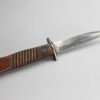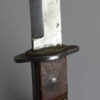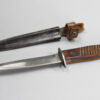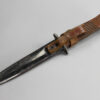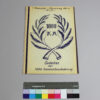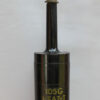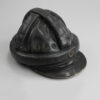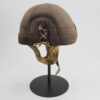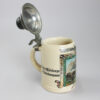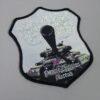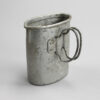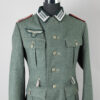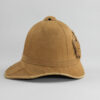Burial dagger from the First World War
Inventory number: DPM 1.265-1.2
In the industrialized First World War, weapons reached ever greater ranges and artillery duels were often fought over many kilometers. At the same time, however, positional warfare also brought the opponents very close together again: soldiers fought in shock troops and also ambushed dug-in enemy troops in order to reconnoitre enemy systems, demoralize the enemy, obtain valuable information from prisoners or retaliate. Conventional long weapons such as rifles and bayonets mounted on them were not suitable for duels in the narrow trench systems. All warring parties quickly realized this, which led to a renaissance of the knife as a weapon.
Initially, soldiers made their own adventurous melee weapons of all kinds, such as sharpened spades or clubs that were driven through with nails or wrapped in barbed wire. In the German Reich, the army reacted to this development in 1915 by issuing various so-called digging daggers to the troops.
Unlike bayonets, these were not usually mounted on the rifle, but carried on the belt. There were countless variants of these daggers; some were officially accepted, others were made from defective bayonets and civilian hunting knives, for example.
The dagger shown here is a detached service weapon and thus a standard version with a blackened sheet steel scabbard and leather belt loop. The name of the manufacturer is inscribed on the blade below the guard: the blade manufacturer Gottlieb Hammesfahr owned an innovative steelware factory in Solingen and was an early adopter of mechanization. This endangered numerous jobs in the factory, which is why the workforce organized strikes, to which Hammesfahr did not respond. His company was ultimately saved from ruin by the new armaments orders during the war.
Object of the month
(short) stories from the depot
Unfortunately, many objects cannot currently be shown in the exhibition for conservation reasons. Here you will find unusual objects and exciting stories of special pieces from the depot


